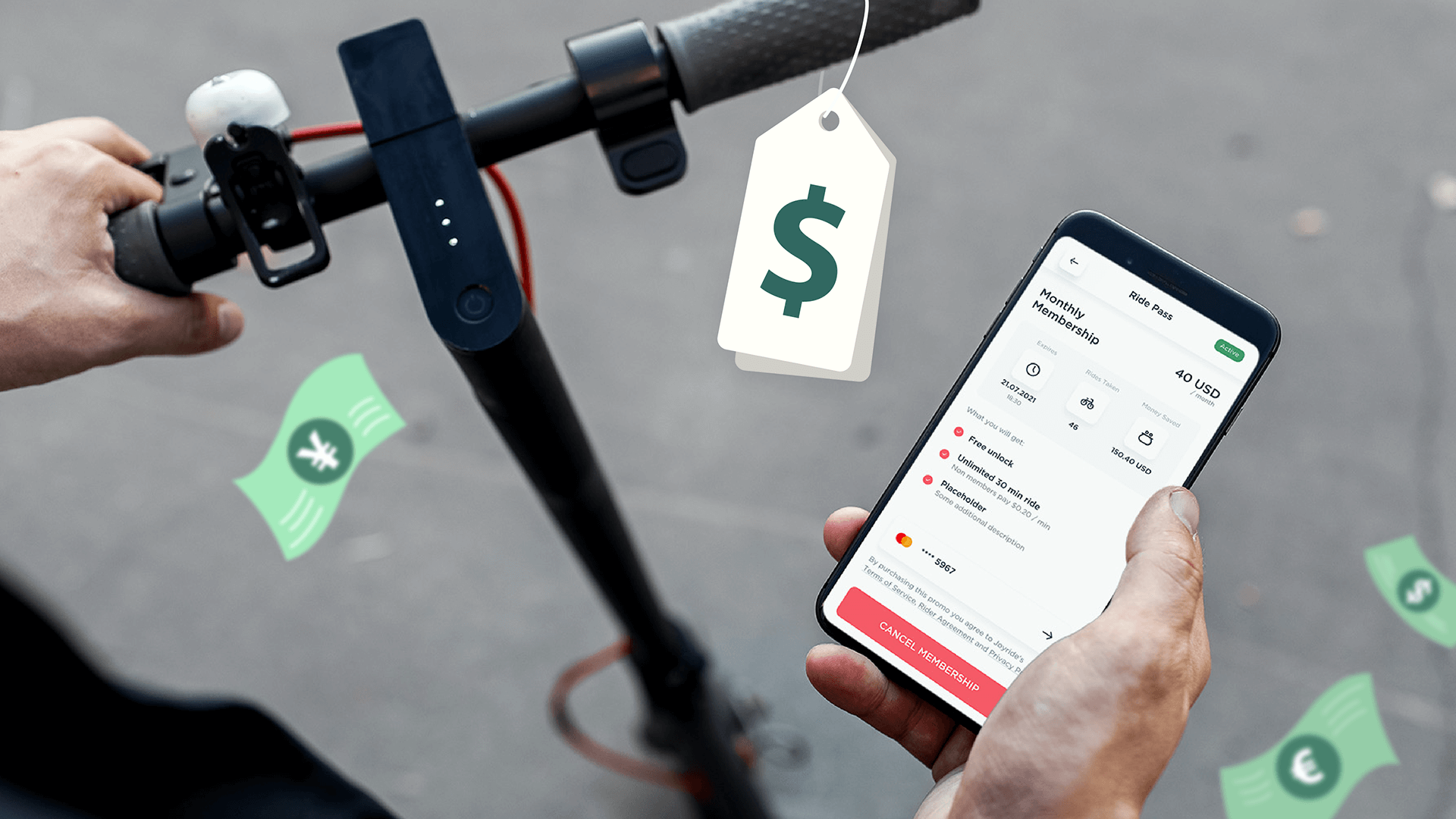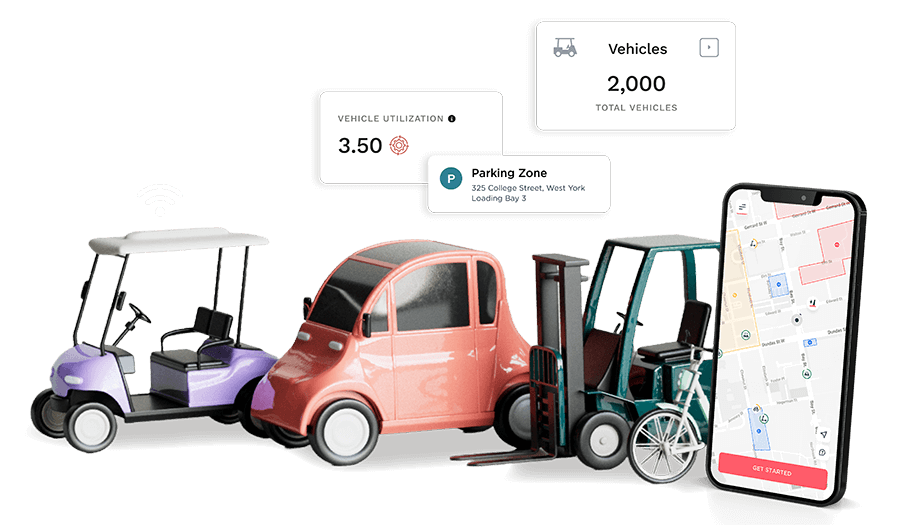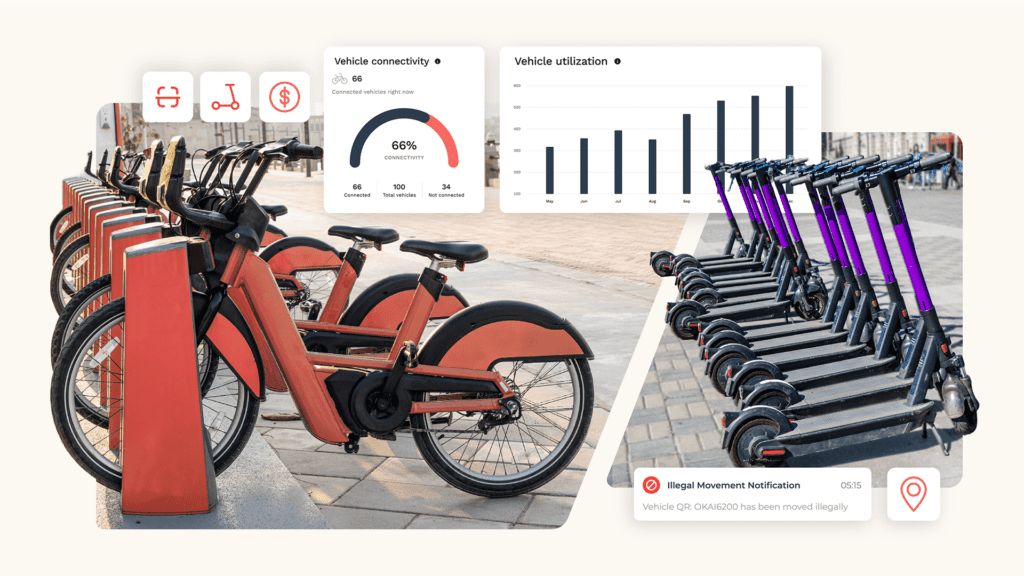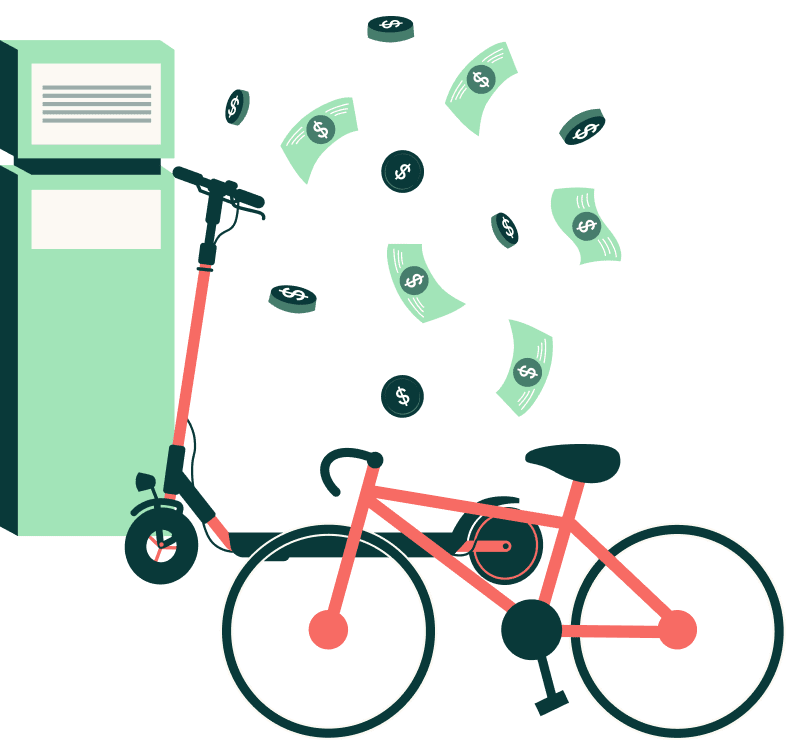Setting shared micromobility pricing is a balancing act. Price too low, and you’ll miss out on revenue. Price too high, and customers will take their business elsewhere.
It can become even more complicated, as micromobility must compete in a landscape built around the benefits of other modes. Cars are private, ride-hailing is convenient, public transportation is (at least somewhat) reliable, and walking is free, so how can scooter and bike sharing compete? The code is crack-able…shared mobility operators do it every day.
Shared micromobility services must be flexible, accessible and priced to match the needs of its customers. Here’s how to make sure the price is right:
How to Price a Shared Mobility Service
Why not free?
The world’s first bike-share program, Witte Fietsenplan, was free. It was more of a political statement than a business venture, but it has an interesting story. Since then, the concept of shared devices has grown to be a multi-billion dollar industry complete with its own set of pricing conventions–the most obvious being: shared mobility has a price.
Certain publicly-procured bikeshare systems and non-profits offer free or discounted rides thanks to government subsidies, corporate sponsorships, and community or equity-focused grants. Other scooter and bike share systems use advertising revenue as a means to cover operational overhead, with some even offering free rides in return for survey responses or ad views.
Long-term it can be difficult to sustain the provision of these services because the service provider must bring in more revenue than the direct and indirect expenses cost.
Cost-Plus Micromobility Pricing
Cost-plus pricing involves calculating the cost of delivering a product or service and adding a margin. A common yet often misguided example of cost-plus pricing in scooter sharing is charging a flat fee to unlock the vehicle. When Bird first introduced the $1 unlock fee coupled with a $0.10/minute metered charge, the theory was that $1 would cover all of Bird’s expenses, meaning the per-minute fee lasting until the end of the ride would be profit.
Unfortunately, deploying a scooter for rental takes more than just clerical work. One dollar might cover fixed costs such as insurance and permit fees, but the electricity for batteries, fuel for maintenance vans, spare parts, and hourly wages all required to get it on the street, might double or triple that cost. To make matters even more complicated, these variable costs will fluctuate greatly depending on the volume of operations in that month.
Competitive Micromobility Pricing
In the absence of historical data to estimate your own costs, the logical next step is to examine how much other businesses spend to deliver a similar service. It won’t be a direct parallel – operational overhead varies based on factors like geography, fleet size, and the regulatory environment – but a basic understanding of competitor deployment costs and ride revenues will provide at least some insight to the margins one might expect with that model.
Matching ‘industry pricing’ is also good for managing customer expectations, but this has its own disadvantages. As it turned out with the $1 unlock fee, companies that copied this strategy soon found out $1 was not sufficient to cover their per-ride costs. A copycat pricing strategy might also lead to race-to-the-bottom pricing in open or multi-vendor markets. Venture-backed players are usually willing to sustain such losses to reach economies of scale but for most businesses, that’s just not an option.
Value-Based Micromobility Pricing
Thankfully, as the micromobility industry has matured, there has slowly been an uptick in more diverse pricing strategies. Some models are suited best for public sharing operations and others for private, but as previously mentioned, an industry standard is not necessarily representative of sustainable operations (or what customers actually want).
Value-based pricing, on the other hand, prices based on the perceived value to the end user. Instead of simply mimicking other micromobility operators, look at your pricing strategy as an opportunity to charge customers based on how well you solve their problem(s).
If ride-hailing is perceived as expensive, price your service to be cheaper. If theft is a concern with vehicle ownership, put a premium on a risk-free alternative. If transit connections are pain, focus on providing reliable, last-mile connectivity.
Tiered Micromobility Pricing
Remember that a user’s willingness to pay for certain services is also influenced by external factors such as weather. The perceived value of an e-scooter ride might fluctuate seasonally–even day-to-day.
In order to capture the variable demand for shared mobility services, many operators offer different pricing tiers with varying features. Customers can then choose how they interact with the service based on their needs, and the value of the service to them at that moment. This might include:
- Usage-based pricing (time or distance)
- Block pricing
- Prepaid ride pass
- Subscription
- Long-term/private rental
- Flat fee
- Something yet to be seen?
Dynamic Micromobility Pricing
Data-driven decision-making is essential for shared micromobility services to remain competitive. By continually analyzing demands and usage patterns operators can adjust pricing strategies accordingly.
Even better is to implement these changes in real-time. Analyzing historical usage data allows for dynamic pricing adjustments, where prices can be higher during peak demand times and lower during off-peak hours. Capturing more rides and/or more revenue in this manner sounds logical, but beware the impact on brand loyalty. Lyft has plans to kill off surge pricing, or ‘primetime’ as the company calls it, because customers (not surprisingly) hate it.
That’s not to say that a demand-based pricing strategy can’t work. The trick is to provide choices to the customer, so they still feel in control of their purchase. Pay-to-park, also known as premium parking, is a feature which allows users to pay an extra fee to park anywhere (within the service area).
You might also consider Incentivized Parking, where users receive a discount by ending their ride in specific areas. Encouraging users to end their ride in specific areas doesn’t just help with parking compliance–it can also be a rebalancing strategy to save on labor-costs.
5 Tips to Price Shared Micromobility
All of this sounds great. But what if you don’t know where to start? Or how to measure what’s working with your customers?
Here are 5 tips to keep in mind when planning your pricing strategy:
1. Focus on unit economics
Profitability isn’t just about revenue, it’s about sustainable positive cash flow. Though it might take you a little while to reach the break-even point of deployments and ride revenue, it’s critical to have a firm understanding of the costs involved to get scooters or bikes out for rental. If you’re burning more on rebalancing than ride revenue is bringing in, it’s time to try a different strategy.
2. Plan ahead for scale
There’s really only three ways to increase profit: serve more customers, reduce costs, or raise prices. A scalable business model accounts for all three. As your customer base grows, the costs associated with service delivery should remain relatively stable (or even decrease), leading to higher profitability.
3. Diversify revenue streams
Public scooter sharing might be your core business, but don’t wait to consider what else is possible with a fleet of electric vehicles. Multi-modal fleets cater to more customer use cases, and the B2B applications for private fleets are endless. Long-term you don’t want to rely on a single source of income.
4. The customer is human
In a business where you have little to no face-time with your customers it’s easy to get lost in numbers and assumptions. Personas and avatars are great, but build solely for ideals and you’ll miss out on real customers.
5. Experiment and be prepared to pivot
Successful businesses solve problems. You may have found the pricing sweet spot for now, but don’t get complacent. Keep your finger on the pulse of culture, economic trends, and global events. Just as you regularly review your business metrics, review what your customers need, and be prepared to pivot if what they needed yesterday isn’t what they need today.
Interested in launching your own fleet, but unsure where to begin?
Joyride Academy has launched the Ultimate Scooter Sharing Business Guide, with proven strategies used by hundreds of fleet operators.
From permits and deployments, to sourcing the right vehicles, to making it all work with smart mobility software – you can master micromobility business fundamentals in less than three hours!
For a limited time, use the code zoom40 to get 40% off at checkout!







